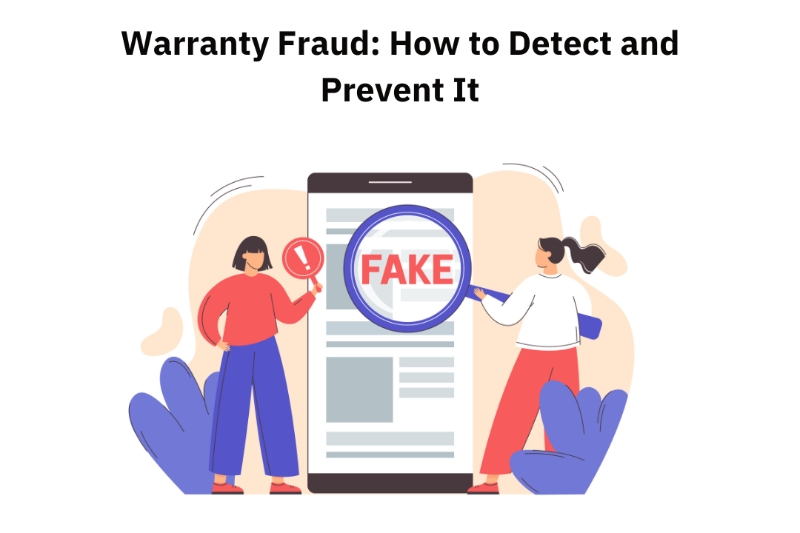Contents

What is Warranty Fraud?
Warranty fraud occurs when someone intentionally makes false claims about a product or service to receive benefits to which they are not entitled. In the case of warranty fraud, this often means making a false claim under a warranty or service agreement. Examples of warranty fraud include:
- Submitting false information or documentation to support a warranty claim
- Intentionally damaging a product to claim a warranty repair or replacement
- Falsely claiming that a product was stolen or lost to receive a replacement under a warranty
- Purchasing a product to return it for a refund or replacement, without any intention of keeping the product
How Does Warranty Fraud Affect Your Brand?
Warranty fraud can have a significant impact on a business's brand reputation. Customers who experience warranty fraud may become dissatisfied with the brand and are less likely to recommend it to others.
In addition, warranty fraud can lead to financial losses for the business, as it may have to pay for fraudulent claims or face legal action if the fraud is discovered.
QR Code-Based Warranty Solution: NeuroWarranty
NeuroWarranty is a QR code-based warranty solution that can help businesses detect and prevent warranty fraud. NeuroWarranty uses a unique QR code that is printed on the product packaging or label.
When a customer purchases the product, they can scan the QR code using a smartphone or other device to activate the warranty.
One of the key benefits of NeuroWarranty is that it provides a way for businesses to track and monitor warranty claims.
By tracking the QR code, businesses can verify the authenticity of the product and ensure that the warranty claim is legitimate.
This helps prevent fraudulent claims and can reduce the financial losses associated with warranty fraud.
Click here to know how we helped the home appliances brand GreenChef stop warranty fraud by 100%.
Another benefit of NeuroWarranty is that it provides a way for businesses to improve customer satisfaction.
By providing customers with an easy and convenient way to activate their warranty, businesses can improve the overall customer experience and build brand loyalty.
How to Detect and Prevent Warranty Fraud
Detecting warranty fraud can be a challenging task, but there are some key signs to look out for that can help you identify it.
One of the most common indicators of warranty fraud is an unusual frequency of claims from a particular customer or location.
This could mean that someone is submitting fraudulent claims under different names or with stolen identities.
Another red flag to watch out for is a sudden surge in claims for the same product. This may suggest that someone is buying up many items to submit false claims.
You should also keep an eye out for claims that are submitted shortly after the purchase of a product, as this is a common tactic used by fraudsters to maximize their payouts.
In addition to monitoring claim patterns, you should also look out for the following signs of warranty fraud:
- Missing or altered serial numbers: Fraudsters may remove or modify serial numbers to conceal the true age or ownership of a product.
- Fictitious receipts or invoices: Fraudsters may create fake documentation to support their claims.
- Inconsistent or incomplete product descriptions: Fraudsters may provide incomplete or inconsistent details about the product they are claiming for.
- Suspicious claim circumstances: Fraudsters may claim damage that seems unlikely or impossible based on the product's intended use.
To combat warranty fraud, it's essential to have a robust system in place that can detect and prevent it. This is where NeuroWarranty's QR code-based solution can help.
By incorporating unique QR codes into each product, you can track it throughout its lifecycle and easily identify if a product is under warranty. This helps prevent fraudulent claims and ensures that genuine claims are processed quickly and efficiently.
In addition to using a QR code-based warranty solution like NeuroWarranty, there are several other steps that businesses can take to detect and prevent warranty fraud. These include:
- Conducting regular audits of warranty claims to identify any inconsistencies or patterns of fraud
- Verifying customer information and documentation to ensure that claims are legitimate
- Using data analytics to identify potential fraud patterns and trends
- Providing training to employees on how to detect and prevent warranty fraud
- Implementing strict policies and procedures for warranty claims, including requiring proof of purchase and limiting the types of claims that are covered
What do leading brands say about working with NeuroWarranty?

By taking these steps, businesses can significantly reduce the risk of warranty fraud and protect their brand reputation and financial stability.
In conclusion, warranty fraud is a serious issue that can have a significant impact on businesses across industries.
By using a QR code-based warranty solution like NeuroWarranty, businesses can detect and prevent warranty fraud, improve customer satisfaction, and protect their brand reputation.
In addition, businesses should take steps to detect and prevent warranty fraud, such as conducting regular audits and implementing strict policies and procedures for warranty claims.
By taking these steps, businesses can reduce the financial losses associated with warranty fraud and protect their bottom line.


